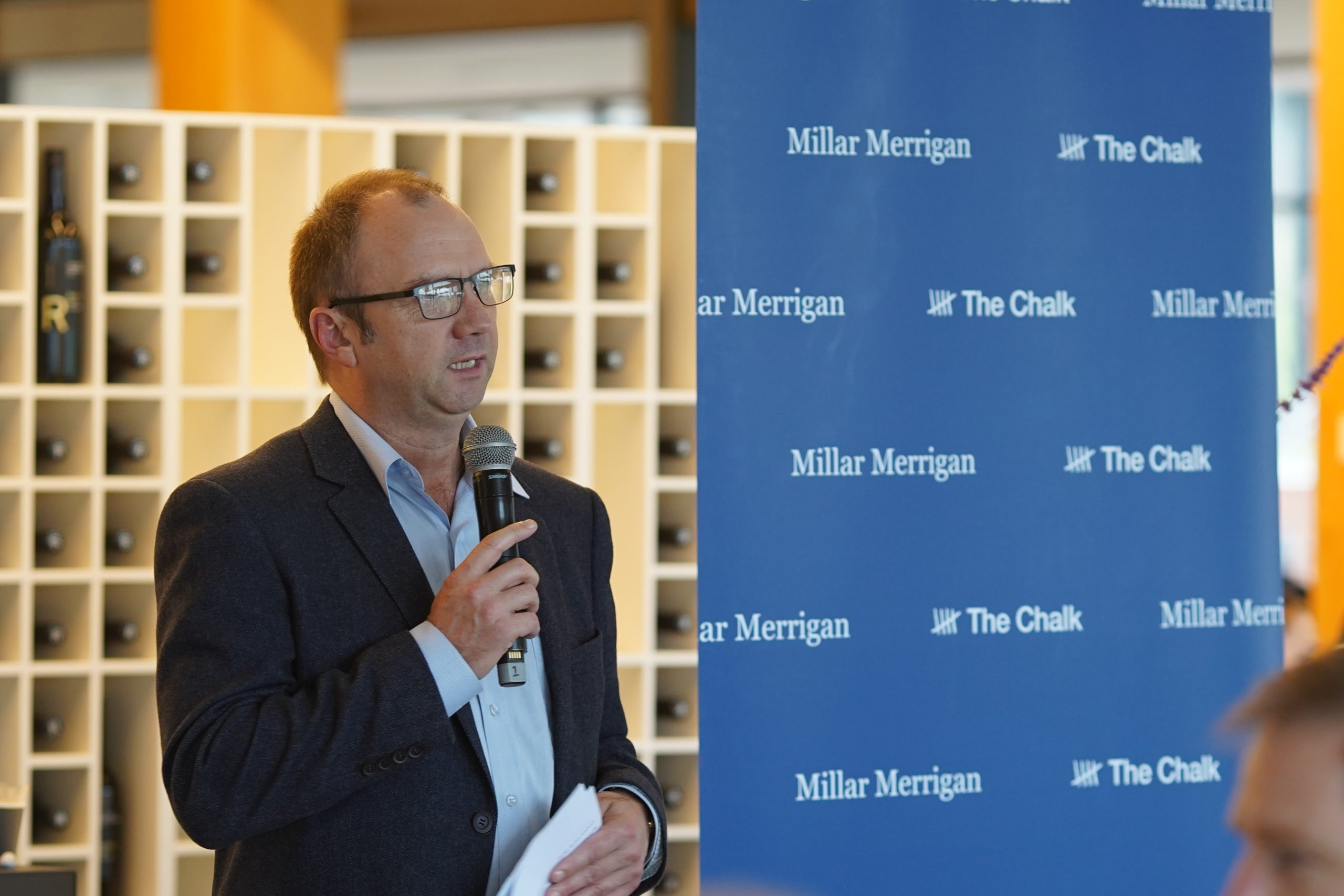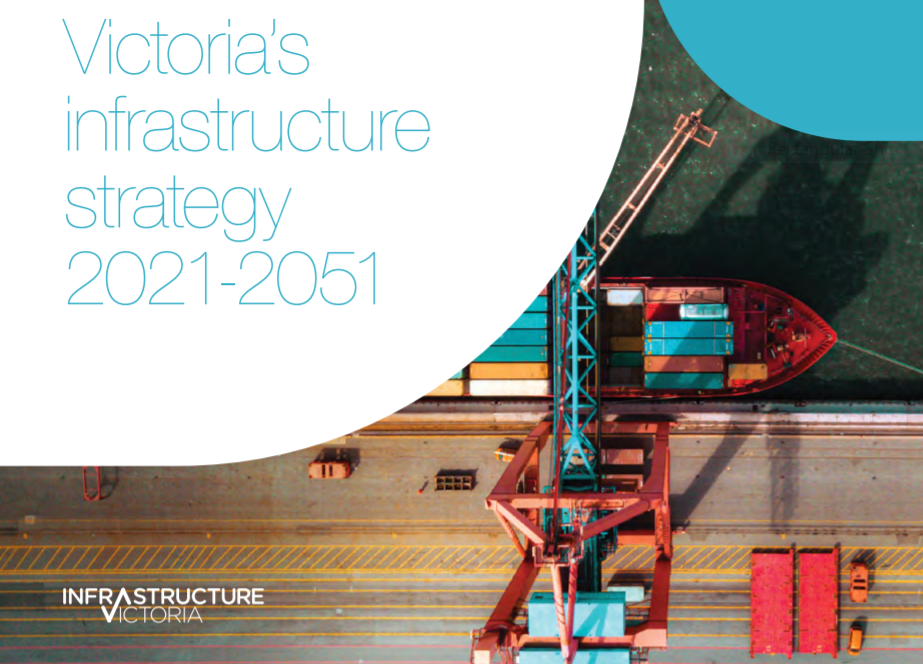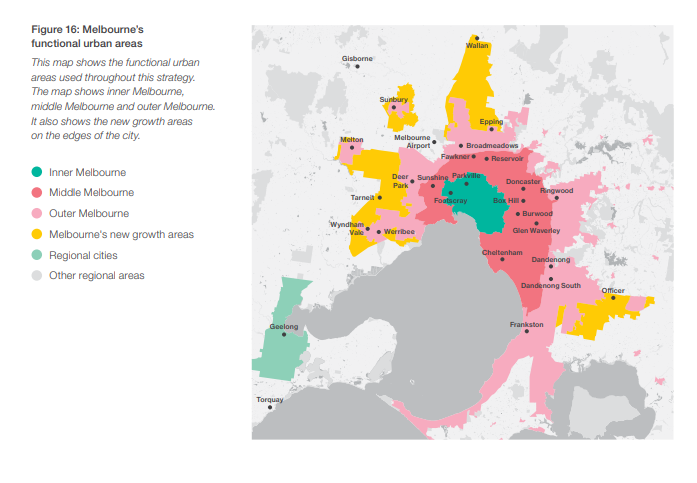Preparing for a future where Victoria has more people (with a population of 10.8 million, up from 6.6 million today), more traffic congestion and urban developments in cities and the regions, as well as a worsening climate crisis, the strategy’s 94 recommendations, span energy, transport, and housing.
Released this August, Infrastructure Victoria’s strategy 2021-2051 is an update of their first strategy, released in 2016, and provides the state with an evidence-based outlook of what’s ahead.
It’s a perspective that the land development industry has a stake in, and could be preparing for.
“Us passionate Melburnians don’t like change when it comes to tinkering with our marvellous city. But planning is all about managing inevitable change”
“This strategy by Infrastructure Victoria seeks to embed the interdependence of land use and infrastructure, as well as to provide for new development where existing infrastructure can best accommodate growth.
“The importance of the interdependence between land use and infrastructure is part of the story behind the history of Melbourne’s growth. Infrastructure Victoria recognised this in their 2016 paper, Learning From The Past – A history of infrastructure planning in Victoria. One of this paper’s most significant lessons comes from the Melbourne Metropolitan Board of Works (MMBW), which became the metropolitan planning authority in the 1950s after being formed as an organisation to deliver infrastructure.
“This current strategy seeks to emulate the vision and delivery that came from the MMBW Melbourne Metropolitan Planning Scheme some 70 years ago. In doing so, Infrastructure Victoria clearly intends to consult widely with the community and make decisions based on detailed analysis and expert reports.
“This should see a diminishing of the influence of vocal NIMBY groups and lesser influence from local politics, in favour of the delivery of a strategic vision for the state as a whole.”
Simon Merrigan, Managing Director, Millar Merrigan
With that prelude in mind, here are our collective views that we’ve chalked up: the most important take-aways from Infrastructure Victoria’s strategy.
1/ Key recommendations revolve around making the most out of current infrastructure to better align new housing with areas that have good access to transport, jobs, and services.
Better use of existing infrastructure to meet demand faster, cheaply, more equitably, and with fewer environmental impacts than most new construction projects, is a major focus together with improving public transport so it is more accessible and efficient. This includes reshaping the metropolitan bus network to support the Melbourne Metro Tunnel opening in 2025, upgrading the City Loop, and redeveloping inner suburban tram lines to curb increases in congestion over the next 10 years.
The Chalk’s take on this:
“As congestion intensifies, access to public transport will become more important and valuable, likely creating new opportunities for property redevelopment along and around existing and new transport corridors. These policies mirror those in Plan Melbourne seeking more medium and high-density housing in and around well-served areas for transport and other services. Progressive developers can start preparing now for opportunities to meet under-served needs for high-quality redevelopments across a growing suburban transport network.
“Additionally, a better alignment of land use and infrastructure will produce positive outcomes such as increasing housing choices to support community diversity and inclusion. This is building on previous background reports by Infrastructure Victoria, including Density Done Well (February 2020) and is reflected in draft Land Use Framework Plans for 6 Melbourne regions that are currently in the consultation phase and due for release early next year.”
Simon Merrigan, Managing Director, Millar Merrigan
2/ Victoria needs new government investment in roads and rail lines, especially in high growth outer-suburbs.
This will be essential to connect the growing suburban and regional populations with the inner Melbourne and CBD areas while providing access to fairer accommodation.
Melbourne’s new growth areas, such as the outer-northern and western suburbs, currently represent 40% of all state population growth and are estimated to keep increasing at the same rate over the next 30 years.
While the CBD will still be providing most jobs, people will be living further away from the city; a trend that has been amplified and accelerated by COVID-19. This move to an outer-suburban and regional living will see some people traveling long distances for work and play.
To manage this, Infrastructure Victoria recommends projects to develop new train lines, such as the Metro Tunnel 2, that better connect high growth suburbs, such as the western suburbs, to each other and the city.
Alongside better transport connectivity, recommendations include up to 16 billion dollars in investment for new public housing, as well as 2 billion to restore rundown estates. Specific recommendations include state-wide targets to reach and maintain the national average – of 4.5 social housing dwellings for every 100 households – by 2031, including new developments in regional areas.
The Chalk’s take on this:
“Growing investments in public housing provides a huge opportunity for developers interested in supporting community initiatives, particularly given the private-public partnership model currently being deployed for existing public housing redevelopment.
“We have identified particular opportunities in regional Victoria, especially in the Gippsland area.
“However, this also represents a challenge: pushing the burden of funding infrastructure onto the private sector, given an atrophy of resources from the public sector.
Chris Constantine, Director, Millar Merrigan
In regional areas, in particular, the lack of a cohesive investment framework for infrastructure means new housing opportunities are left unrealised. Rail upgrades are required as an immediate priority.”
3/ Victoria should take action to support the energy transition and contribute to the state’s net-zero target by 2050.
Reducing emissions and creating the foundations for a circular economy is critical for a prosperous 2051. And to do this, so is moving to electric vehicles (EVs). To make this happen, the strategy recommends ending the sale of internal combustion vehicles by 2035, while at the same time, putting incentives in place for more of us to start driving EVs.
Also on the cards are regulations to encourage new housing estates to go gas-free by 2025, and to prioritise energy efficiency – so our homes are warmer in winter, cooler in summer, and healthier year-round.
This is coupled with investment in new large-scale renewable energy zones, attracting increasing private sector investment to replace dying fossil fuel assets, and meeting the rising demand for green power to serve our transport and home energy needs.
Better water management systems, and reducing water waste, are also recommended.
“It is essential that developers/planners understand that there is no single pathway to having a coordinated transition to net-zero emissions, and that this will include a combination of solutions. The transformation will require a consultative approach during the transition phase and, attentive reviewing processes to ensure that completed projects are achieving the desired outcomes. This will be essential to ensure that both the end-users and net-zero goals are met.”
“The appetite for sustainable development has never been higher, and it is a matter of whether the gas distributors can still play an integral role with the energy mix for future and existing housing developments in keeping with net-zero targets. There are strategies in place to offer developments 100% hydrogen supply by 2025, but the future of gas is headed towards blending biogas and hydrogen in networks to decarbonise all natural gas. This will likely lead to an interconnection between gas and electricity systems once this reaches maturity.
“We foresee growing opportunities, especially for large developers, to differentiate themselves in the market by attracting land buyers drawn to eco-friendly developments. This is leading businesses and organisations to innovate towards more sustainable alternatives. For example, the Urban Development Institute of Australia (UDIA) has launched an EnviroDevelopment program to help buyers make informed decisions when it comes to assessing sustainability in a development project. The development is assessed across six sustainability categories including energy, waste, community, water, materials and ecosystems.
“Recently, we visited the Aquarevo estate in Lyndhurst which Southeast Water developed with cutting edge eco-friendly initiatives. We are keen to continue looking for innovation opportunities, particularly in the electricity and water re-use areas.”
Sehon Pellew, General Manager Operations, Millar Merrigan
Do you have any questions, comments or are interested in continuing the conversation? Get in touch with our experts.








